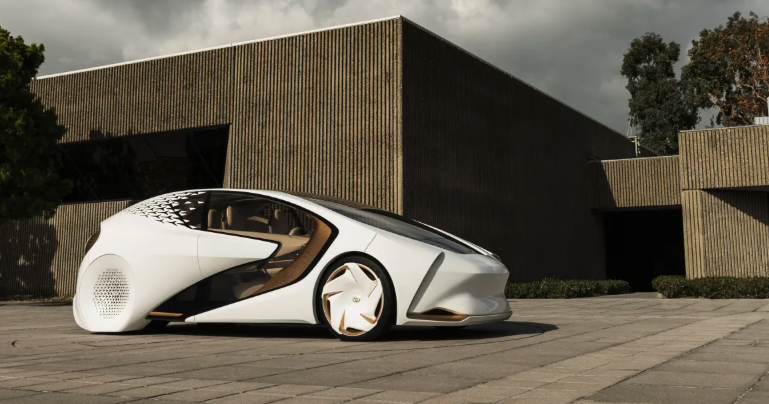Title: Electric Vehicle Innovation: Accelerating the Shift Toward a Greener Future

The automotive world is undergoing a historic transformation. At the heart of this shift is the electric vehicle—a symbol of sustainability, innovation, and technological advancement. As the global community becomes increasingly aware of the impact of carbon emissions and fossil fuel dependency, the electric vehicle is no longer just an alternative; it is rapidly becoming the primary mode of transport for the future.
In this article, we explore how the electric vehicle is disrupting traditional mobility models, powering clean technology startups, and reshaping the automotive industry’s dynamics.
The Electric Vehicle: More Than Just a Car
An electric vehicle (EV) is powered by one or more electric motors using energy stored in rechargeable batteries. Unlike internal combustion engine vehicles, EVs do not require gasoline or diesel to operate and emit no harmful exhaust gases. They can be plugged into the electric grid, and in some cases, even powered through renewable sources like solar energy.
But the electric vehicle is more than a cleaner way to commute—it’s the cornerstone of smart cities, energy independence, and the next digital revolution in transport.
See also: Car Bumper Repair Telford: Auto Body and Scratch Repair Services
Benefits Driving EV Adoption
🌍 Environmental Sustainability
The most prominent benefit of an electric vehicle is its ability to reduce greenhouse gas emissions. According to the International Council on Clean Transportation, EVs produce up to 70% fewer emissions over their lifecycle compared to petrol-powered cars. As the world moves toward net-zero goals, this benefit cannot be overstated.
🏙️ Urban Compatibility
EVs are quieter and cleaner, making them ideal for cities. Reduced noise pollution, no idling fumes, and lower operating costs support a more livable and breathable urban environment. Cities like Oslo and Amsterdam are already moving to ban fossil-fuel cars by 2030.
Battery Technology: Fueling the EV Movement
Today’s EVs typically use lithium-ion batteries, which offer a strong balance of energy density, weight, and recharge cycles. However, battery innovation is happening at breakneck speed.
- Solid-State Batteries: These promise higher capacity, faster charging, and better safety, though commercial viability is still being perfected.
- Battery Recycling: Companies like Redwood Materials are working to recycle valuable minerals from used EV batteries, minimizing waste.
- Second-Life Applications: Old EV batteries are being repurposed to store energy for homes and grid stabilization.
As battery prices fall and performance improves, EVs will become increasingly accessible.
Challenges Slowing the EV Revolution
🔌 Charging Infrastructure
The biggest hurdle facing the electric vehicle industry today is the lack of fast and accessible charging stations. For EV adoption to thrive, public and private sectors must invest in nationwide and urban charging networks, especially in rural or developing areas.
⛏️ Resource Extraction
The materials used in EV batteries—lithium, cobalt, and nickel—are often mined in regions with limited environmental and labor regulations. Addressing ethical sourcing and reducing the need for virgin materials are priorities for sustainable growth.
⚡ Grid Readiness
As EV adoption increases, so does electricity demand. National power grids must prepare for spikes in load, especially if charging happens at peak hours. Smart grid integration and load balancing are essential for a smooth transition.
Government Policies Fueling EV Growth
Governments around the world are creating policies and incentives to support the adoption of electric vehicles. These include:
- Tax Credits and Rebates: Many countries offer subsidies for purchasing EVs or installing charging equipment.
- Zero Emission Zones: Cities like London and Paris are introducing low-emission or zero-emission zones, encouraging EV use.
- Fleet Transition Mandates: Municipalities and delivery companies are being encouraged or required to electrify their fleets.
In Hong Kong, for example, the government offers a first registration tax waiver and has launched the “EV-charging at Home Subsidy Scheme” to promote home charging installations.
Corporate Adoption and the EV Fleet Model
Amazon, for instance, has ordered over 100,000 electric delivery vans from Rivian as part of its goal to be net-zero carbon by 2040.
Car rental companies like Hertz are also electrifying their fleets to meet demand from both corporate and leisure customers who want greener transport options.
The Role of Renewable Energy in EV Ecosystems
The true sustainability of an electric vehicle depends on the source of electricity. When powered by coal-heavy grids, emissions are still reduced—but not eliminated. Pairing EV charging with solar, wind, or hydropower ensures a cleaner overall impact.
Some EV startups are now offering solar-charging add-ons or integrating solar panels into vehicle roofs. Others are developing software that allows EVs to only charge when renewable energy is available on the grid.
The Future Outlook of the Electric Vehicle Industry
- Vehicle-to-Grid (V2G) Integration: EVs will not just consume electricity—they’ll supply it during peak hours.
- Autonomous EVs: Self-driving electric cars will revolutionize transportation, especially for delivery and mobility-as-a-service.
- Hypercharging Technology: Ultra-fast charging could cut charging times to under 10 minutes, competing directly with traditional fueling.
- Smart Connectivity: Advanced telematics, over-the-air updates, and AI-enabled safety systems will be standard in future EVs.
Final Thoughts: A Future Fueled by Electricity
The electric vehicle is not a passing trend—it is the backbone of a sustainable transport future. With innovation accelerating, barriers falling, and public acceptance growing, the question is no longer if EVs will dominate the roads, but how soon.
From startups reimagining vehicle design to governments reshaping public policy, every player in the automotive world has a role in this transformation. For consumers, embracing an electric vehicle is a powerful way to reduce environmental impact and drive smarter into tomorrow.




